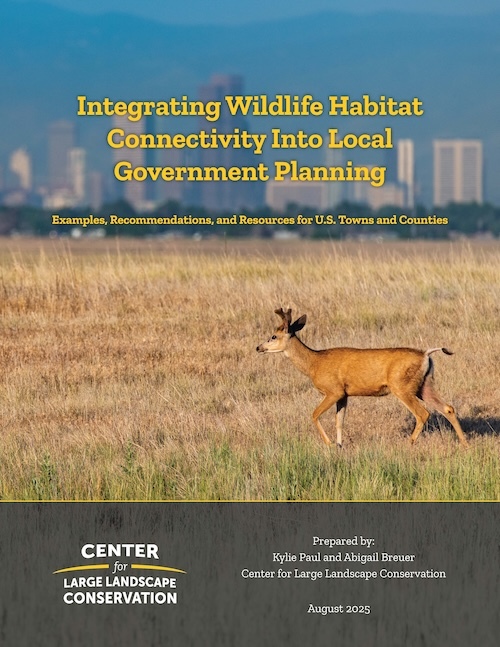Integrating Wildlife Habitat Connectivity into Local Government Planning: Examples, Recommendations, and Resources for U.S. Towns and Counties
 Planners across the United States are navigating unprecedented challenges: balancing growing development pressures, public expectations for livability and sustainability, and the need to preserve vital ecosystems. One increasingly essential dimension of this work is planning for wildlife habitat connectivity.
Planners across the United States are navigating unprecedented challenges: balancing growing development pressures, public expectations for livability and sustainability, and the need to preserve vital ecosystems. One increasingly essential dimension of this work is planning for wildlife habitat connectivity.
Local governments have land use authority across nearly two-thirds of land in the U.S. and have a key role to play in preserving wildlife habitat connectivity.
In recognition of the importance of local action, we’ve created a new report on wildlife connectivity and local government to bring together the policy tools and practical strategies that every community and community member—whether you’re a resident, planner, biologist, developer, or legislator—can consider using to help keep our landscapes connected.
This report serves as a practical guide for planners and partners to incorporate wildlife habitat connectivity into local land use planning. It includes:
- sample policy and ordinance language from communities across the country
- links to relevant planning and technical resources
- case studies that highlight implementation approaches
- recommendations and best practices to support local decision-making
Support for this project was provided by The Pew Charitable Trusts. The views expressed herein are those of the authors and do not necessarily reflect the views of The Pew Charitable Trusts.
READ THE EXECUTIVE SUMMARY HERE
Recommended Citation: Paul, K. and A. Breuer. 2025. Integrating Wildlife Habitat Connectivity Into Local Government Planning: Examples, Recommendations, and Resources for U.S. Towns and Counties. Center for Large Landscape Conservation. https://doi.org/10.53847/GLYQ9718
Banner Photo: Ashville, NC – Adobe Stock


